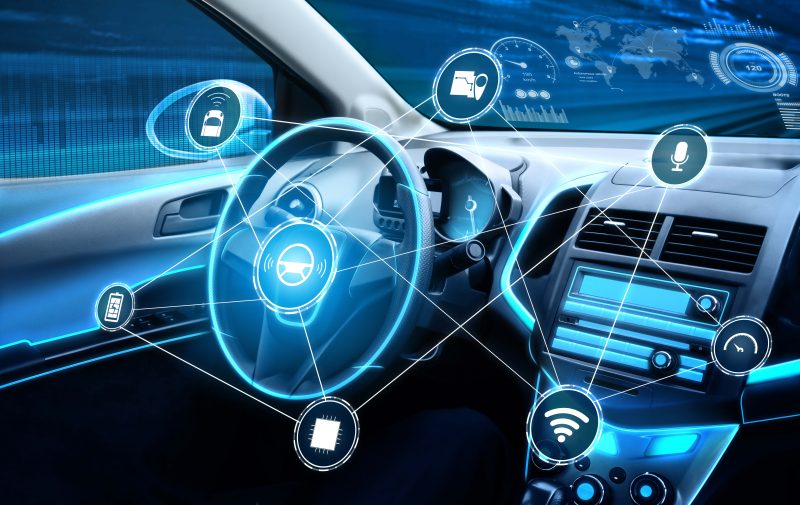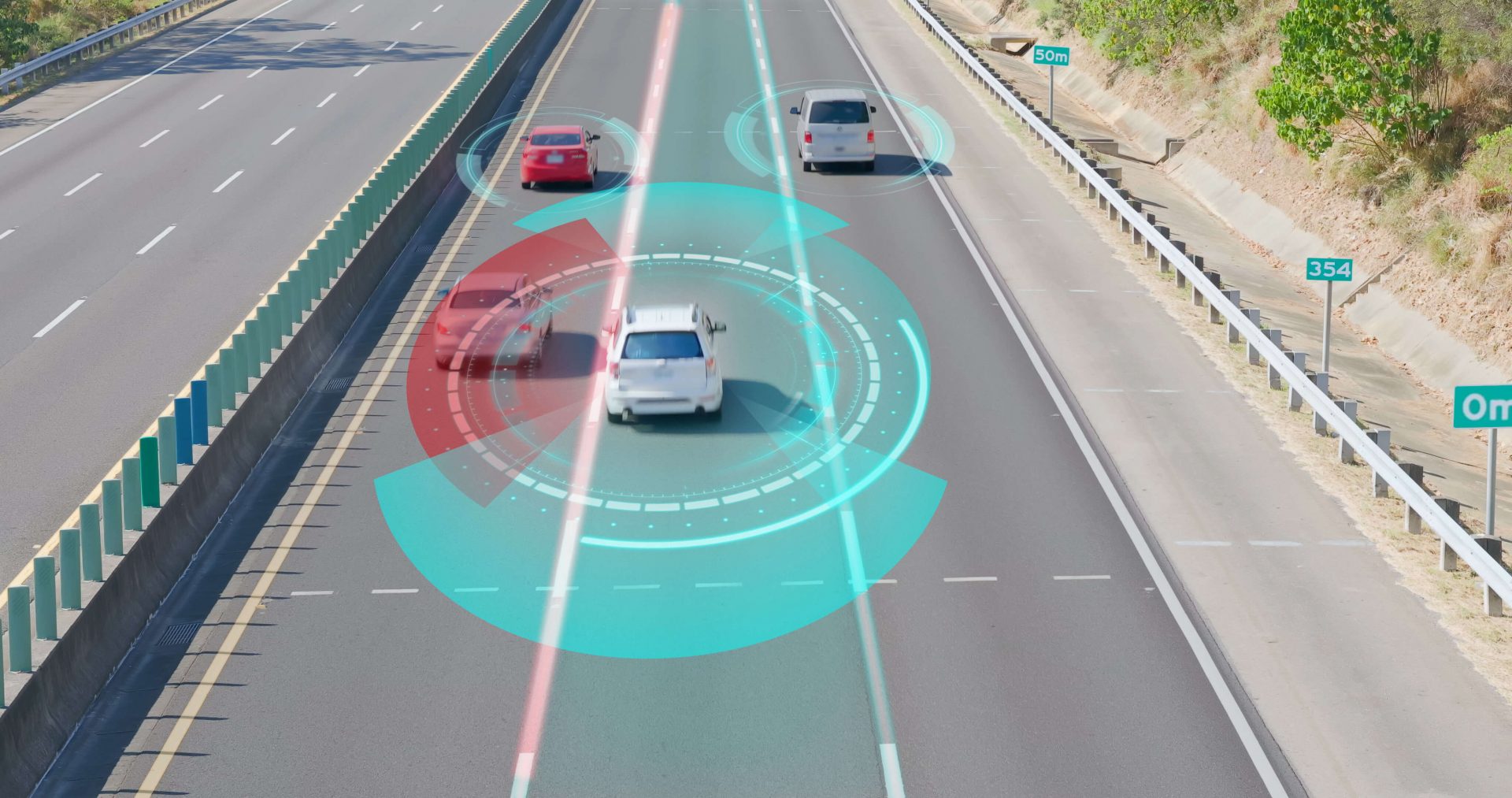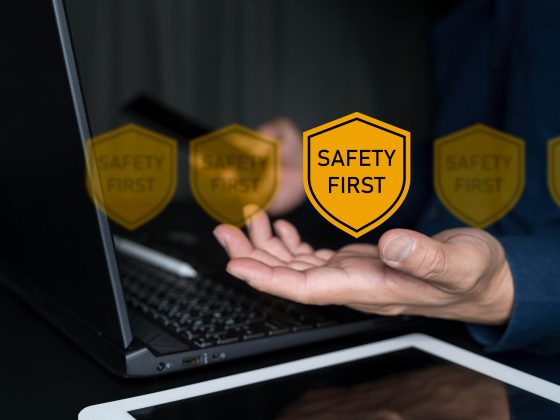There was a time in the not-so-distant past when new drivers were systematically, doggedly taught the concepts and disciplines of managing an automobile as if their lives depended on it. Because their lives (along with the lives of any passengers, adjacent vehicle occupants, and pedestrians) did indeed depend on the study and implementation of basic, integral safety practices. Once upon a time, back when cars were clunky, and cassette tapes were a thing, our parents taught us about K-turns and parallel parking. Our instructors showed up how to check blind spots and determine distances between ourselves and our surroundings. We had to know speed limits, learn how to brake in the rain, and which lights to use in the fog. Rules were all but drilled into our minds: wipers on = lights on.
Use eTags© to Quickly Complete Your DMV Service. Renewals, Title Transfers and More, All Online!
Thus, generations of folks entered thruways and side streets, highways and avenues, well-equipped to drive on the defensive, to be alert, aware, and to safely move across cities, across the country. But as with everything on the planet, the automobile world evolved and advanced.
Cassettes turned into CD drives, and CD drives into USB ports, USB ports into Bluetooth compatibility.
Of course, it wasn’t only the entertainment system that saw improvements. Quite possibly, no technology has seen quite such rapid and noteworthy progress as that of the vehicle industry. The progress has improved safety and made vehicles more connected.

Introducing Advanced Driver-Assistance Systems
Though we are still a ways from cars being completely autonomous, we are also not so far from this reality. And in the race to present the first fully functional AI vehicle, automobiles have seen enormous changes to their safety systems. Cars will now tell us if we’re driving too fast, or too close to the vehicle in front of us. They’ll alert us if it’s safe to change lanes and if we’re not moving in a straight line. The signal whether it’s clear to back up, and practically maneuver us right into that tight parking spot with a series of lines and beeps.
These advances have clocked in some pretty impressive statistics when it comes to driver and passenger protection. Studies indicate a 49% reduction in the chances of a serious crash, and a 54% decrease in the risk of injury with the current ADAS (Advanced Driver-Assistance Systems). And as far as percentages go, that is a dramatic increase in safety. So much so, that many of these security features have become federally mandated over the years.
It’s hard to believe that there was a time when seat belts were neither standard nor legally required. These days, the list of necessary safety elements has grown along with many bells and whistles that are now available in even the most basic of car models. Mandatory features now include the following:
- Airbags: Since 1999, all cars, light trucks and vans must be equipped with front seat airbags. However, most new cars are manufactured with six bags.
- Antilock Brakes: Since 2000, all passenger cars have had faster braking ability and more steering control (as opposed to none at all) when slamming on the brakes in an emergency.
- Backup Camera: Since 2018, all cars, light trucks and vans come with a rearview camera, allowing the driver to check for vehicles, pedestrians, and animals they may otherwise not notice behind the vehicle.
- Electronic Stability Control: Since 2012, all passenger cars have this feature which assists the vehicle in moving in the same direction as the steering wheel.
- Safety Belts: An oldie but a goodie – since 1968, and in accordance with a Supreme Court ruling, all passenger cars must be equipped with seat belts. This feature has proven to reduce front seat fatalities by half.
- LATCH: Lower Anchors and Tethers for Children became mandatory in 2002 for all passenger cars, ensuring greater levels of safety for child passengers by providing built-in, purpose-made attachment spots for car seats that have proven far superior than a simple seat belt connection.
- Tire Pressure Monitoring System: A requirement since 2007 for all passenger cars, light trucks and vans, this system tracks tire pressure, and alerts for any changes.
- Traction Control: Made mandatory in 2011 for all passenger cars, this feature improves the grip of vehicle wheels to the road, which is particularly smart in wet conditions.

Now, for the bells and whistles safety features that are not yet mandated, but are becoming more and more prevalent in vehicles across the board:
- Blind Spot Monitoring
- Brake Assist
- Forward Collision Warning
- Intersection Turn Assistance
- Lane Centering, Departure, Keeping, Tracing Assist
- Pedestrian Detection
- Rear Automatic Emergency Brake
- Rear Cross-Traffic Alert
- Semi-Autonomous Driving
- Adaptive Cruise Control
- Auto Emergency Braking
- Traffic Sign Recognition
- Automatic High Beams
- Adaptive Headlights
- Night Vision
And the list actually goes on and on, allowing for advances in technology to improve the quality of driving as well as the safeguarding of drivers, passenger and pedestrians. However, (because there is always another side to every coin) we thought we’d point out a few pitfalls of tech-savvy vehicles. Here are a few points to bear in mind when getting behind the wheel of a car with ADAS:
Yes, You Still Have to Drive Your Car
The car can’t do everything. There may be cameras and sensors and computing gadgets everywhere, but the slightest bit of dirt, heavy rain, or even a dead bug can interfere with the system’s ability to perform or warn you of danger. It is imperative to check your blind spot, to consult all your mirrors, to maintain the old-fashioned techniques of driver responsibility. Remember that the newfangled systems work in collaboration with drivers and should never be considered a replacement for human vigilance.
A little understanding goes a long way. Before assuming the helm of a vehicle with ADAS, it’s important to familiarize yourself with the ins and outs of how the components will work to protect you. Rather than becoming alarmed at a sudden automatic deceleration or warning alarm, it’s smart to know what the car is doing and why.
In short, while the dramatic advances in automobile safety technology are a remarkable thing, it behooves each driver to remain alert and aware of their surroundings at all times and not become complacent or overly reliant on the car’s intelligence. We like to think of the ideal scenario as a symbiosis between machine and human: each one demonstrating their best effort and moving together in perfect harmony.








